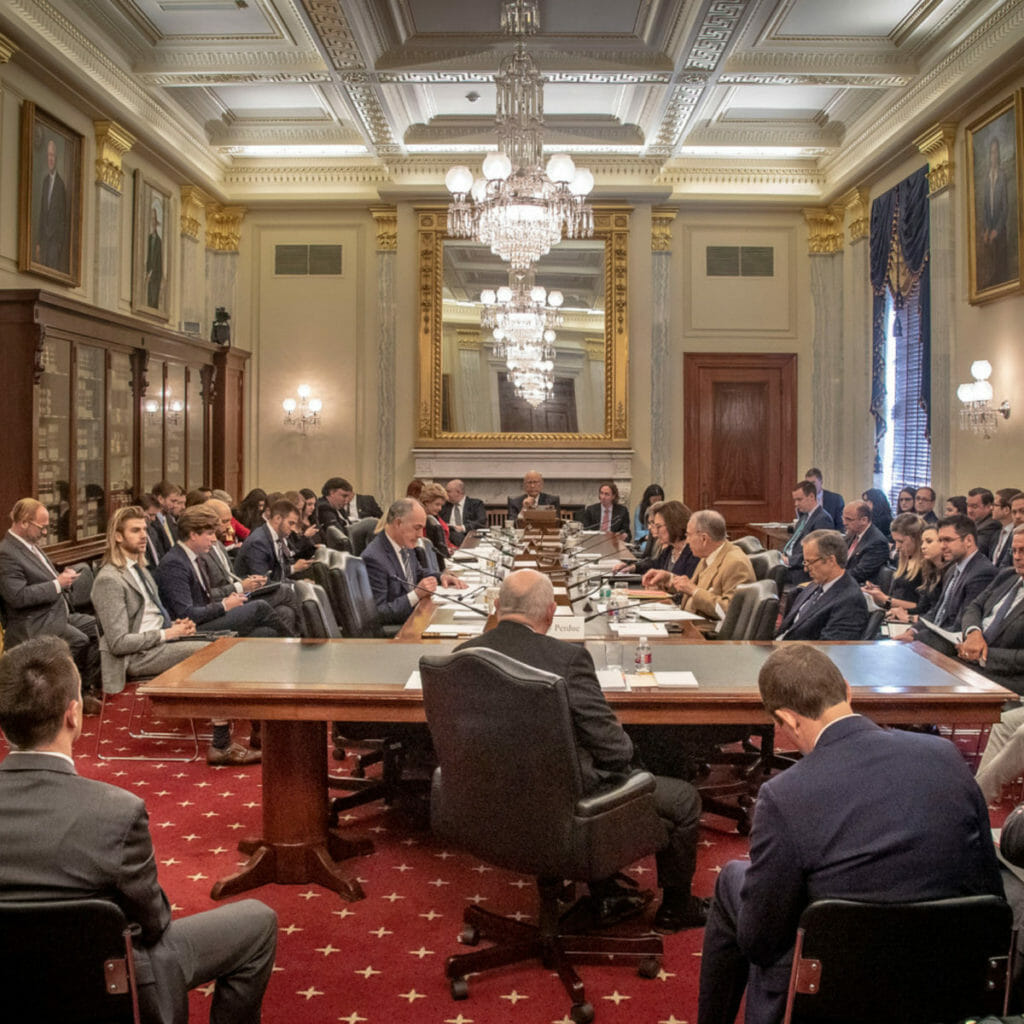
This blog is part of a series from the July 2021 Washington D.C. Immersive program of the Food Policy and Sustainability Leadership Graduate Certificate Program. Students met with federal food and agriculture focused officials at USDA, the White House and other agencies, Congressional leadership, industry leaders and other important policy stakeholders.
During our D.C. immersive, we were fortunate enough to hear from staff of the Senate Committee on Agriculture, Nutrition, and Forestry including Katie Naessens, Senior Professional Staff Member, Adam Tarr, Senior Professional Staff, Kyle Varner, Professional Staff, and Jacqlyn Schneider, Deputy Staff Director, who gave a nuts and bolts look at the inner workings of the Senate Ag Committee.
The thing I was most struck by in this discussion was how wide-reaching the interests of this particular committee can be. Agriculture, Nutrition, and Forestry covers, both literally and figuratively, a lot of ground. In the hour-long conversation, we discussed topics as seemingly disparate as the infrastructure talks currently ongoing in Washington, a bipartisan climate bill, and other pressing issues of concern to the committee.
As was evident from nearly all of the conversations we had throughout the immersive experience, the infrastructure bill (or bills) was a primary topic of conversation. In addition to the “traditional” definition of infrastructure (roads and bridges, et al.), additional topics such as grid electrification, broadband access, and public transit infrastructure have also been front and center. There are clear connections to be made between agriculture and traditional infrastructure, chiefly the ability of farmers and ranchers to get their food to consumers, particularly those in rural communities or food deserts. But access to technology and grid electrification also have dramatic impacts on the ag sector. Climate change also looms large in this conversation, and the bipartisan infrastructure bill in the senate omits key climate-related portions of Biden’s original plan, including a clean energy standard and a new Civilian Climate Corps. It seems likely a separate infrastructure bill, totaling an estimated $3.5 trillion, could include more of these climate-related infrastructure pieces. This bill would likely have to pass through reconciliation and would need all 50 senate democrats (plus VP Harris’ tie-breaking vote) to do so.
One bill mentioned may have implications in the sustainable agriculture space is the Growing Climate Solutions Act (S.B. 1251) sponsored by Sen Mike Braun (R-IN). This act, which passed the senate in June on a vote of 92-8, is aimed at providing technical and certification assistance to farmers, ranchers, and forest landowners who participate in voluntary environmental credits for “the prevention, reduction, and mitigation of greenhouse gas emissions or carbon sequestration of agricultural or private forest land.” Though the program is strictly on a voluntary basis, it was really encouraging to see it garner so much support from the majority of the senate. Also noted was some trepidation from ranking member of the House Ag Committee, Glenn Thompson, who issued a statement after the bill passed the Senate. Thompson is concerned about the bill being a “big government solution in search of a problem.” Thompson expressed unwillingness to create “more red tape” for farmers and ranchers. As an alternative, Thompson pushed for more buy-in for a set of bills introduced by House Ag Republicans advocating for “natural solutions for climate change” such as incentivizing private sector funding for conservation efforts through Thompson’s Sustains Act (H.R. 2606), among other bills.
In addition to these prominent topics, the Senate Ag Committee staff also mentioned several other key issues of concern for the committee, including support of BIPOC farmers, added technical assistance on climate-friendly agriculture, supporting small and mid-sized farmers, and addressing the gaps in the supply chain made apparent by the covid-19 pandemic. Additionally, the committee will vote on whether or not to confirm many of Biden’s nominees for positions within the USDA.
It was very clear after hearing from Senate Ag Committee staff that this particular committee is responsible for a tremendously large set of issues. The Farm Bill, Childhood Nutrition Reauthorization, fighting wildfires, investing in rural development, and shoring up the supply chain are all of concern for the Ag Committee. The USDA is, as staff put it, responsible for a “micro-government” working towards progress on the many pressing issues in the agricultural sector.
It was really insightful to hear how staff and members of the Ag Committee are working with many other committees, especially in the climate space, and juggling all of these issue areas. I’m encouraged by some of the climate, conservation, and sustainable agriculture policy potentially on the horizon, and learned so much from the short time we spent with the Senate Ag staff members. A big ‘thank you’ to them for taking the time to chat with us, and for expanding our minds to all of the diffuse concerns of the Senate Committee on Agriculture, Nutrition, and Forestry.
Image Source: USDA Flickr